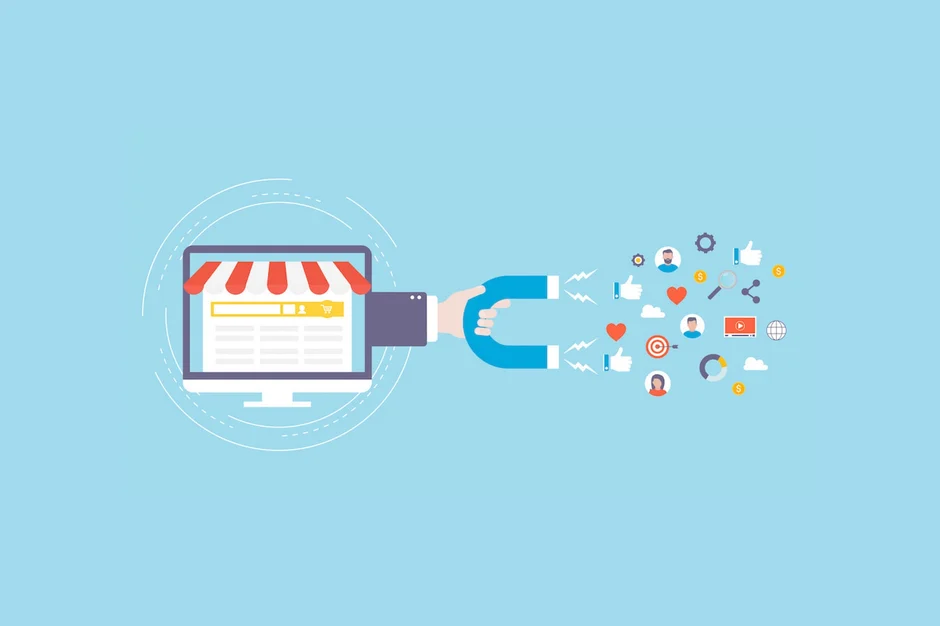Digital marketing uses various online channels like social media, email, and websites to promote brands. It aims to build long-term customer relationships and brand awareness. Performance marketing, on the other hand, is results-driven. Marketers only pay for specific actions, such as clicks, leads, or sales.
This approach provides measurable outcomes and a clear return on investment. Businesses often use performance marketing to achieve quick, tangible results. Understanding the distinction between these two marketing strategies helps in crafting a balanced and effective marketing plan that leverages the strengths of both.
Introduction To Marketing Types
Digital marketing uses online channels to reach people. It includes social media, email, and websites. The goal is to promote products or services. It helps in building brand awareness. It can also increase customer engagement. Metrics are used to measure success. Metrics include clicks, likes, and shares.
Performance marketing focuses on measurable results. Advertisers pay when a specific action occurs. Actions include clicks, sales, or leads. This type of marketing is cost-effective. It ensures that money is spent wisely. It is data-driven and relies on analytics. This helps to optimize campaigns for better results.
Core Principles
Digital marketing aims to build brand awareness. It focuses on reaching a broad audience. Performance marketing focuses on measurable results. It aims to achieve specific actions like clicks or sales. Both types of marketing use online channels.
Digital marketing uses social media, blogs, and emails. Performance marketing uses PPC ads and affiliate marketing. Digital marketing works over a long period. Performance marketing seeks quick results. Each has its own goals and objectives.
Digital marketing targets a wide range of people. It aims to reach as many people as possible. Performance marketing targets specific groups. It focuses on people likely to take action. Both approaches use data to find their audience. Digital marketing uses general demographics. Performance marketing uses detailed user data.
Each method has its own way to reach people. Digital marketing casts a wide net. Performance marketing aims for precision. Both methods need to understand their audience well.
Tools And Techniques
Digital marketing uses tools like Google Analytics and SEO software. These tools help track website traffic and optimize search engines. Email marketing platforms like Mailchimp send newsletters to customers. Social media tools like Hootsuite schedule posts on platforms like Facebook and Twitter.
Content management systems (CMS) like WordPress manage website content. Graphic design tools like Canva create engaging visuals. These tools help reach a broad audience and build brand awareness.
Performance marketing focuses on measurable results. Affiliate marketing platforms track sales and leads from partners. Pay-per-click (PPC) advertising tools like Google Ads manage paid campaigns. Conversion rate optimization (CRO) tools like Optimizely test website changes to improve user experience.
Attribution software tracks which marketing channels drive the most conversions. Analytics tools measure the return on investment (ROI) of campaigns. These tools ensure marketing efforts are cost-effective and results-driven.
Strategies Employed
Digital marketing encompasses a broad range of online tactics, while performance marketing focuses on measurable results. Strategies differ in scope and objectives.
Digital Marketing Strategies
Digital marketing uses a broad approach. Common strategies include social media marketing, content marketing, and email marketing. Social media platforms like Facebook and Instagram are often used. Content marketing involves creating blogs, videos, and infographics. Email marketing sends newsletters and promotional offers. Each strategy aims to build brand awareness and engage the audience.
Performance Marketing Strategies
Performance marketing focuses on measurable results. Popular strategies include pay-per-click (PPC), affiliate marketing, and retargeting ads. PPC ads appear on search engines and social media. Affiliates promote products and earn a commission for each sale. Retargeting ads follow users who visited a site but didn’t convert. Each strategy aims for specific actions like clicks, leads, or sales.
Measurement And Metrics
Digital marketing encompasses a broad range of online strategies to promote brands. Performance marketing focuses on measurable outcomes like clicks, leads, and sales.
Digital Marketing Metrics
Digital marketing uses a range of metrics. These include website traffic, social media engagement, and email open rates. Each metric helps marketers understand their audience. Conversion rates are also key. They show how many users take a desired action. Overall reach is important too. It measures how many people see the content.
Performance Marketing Metrics
Performance marketing focuses on specific metrics. These include cost per click (CPC), cost per acquisition (CPA), and return on ad spend (ROAS). Each metric tracks the efficiency of ads. Click-through rates (CTR) are also crucial. They show the percentage of people who click on ads. Performance metrics are often more specific than digital marketing metrics.
Budget And Cost
Digital marketing often needs a larger budget. This is because it covers many areas. SEO, social media, and content creation are a few examples. Each area needs money and time. Companies may spend more on brand awareness. This approach is broad and long-term.
Performance marketing usually has a smaller budget. It focuses on specific results. Cost-per-click (CPC) and cost-per-action (CPA) are common. Companies pay only when they get results. This makes it more cost-effective. The budget is often more flexible. It can be adjusted based on performance.
Advantages And Disadvantages
Digital marketing reaches a wide audience. It is cost-effective. Marketers can easily track results. This helps in understanding customer behavior. Digital marketing offers various channels. These include social media, email, and websites. Yet, it faces high competition. Too many ads can overwhelm users. Sometimes, it lacks personal touch. Data privacy issues also arise.
Performance marketing is results-driven. Payments are made based on results. This makes it cost-efficient. Advertisers can measure ROI easily. It allows for quick adjustments. Targeting specific audiences is easier. Yet, it requires constant monitoring. Campaigns can become complex. There’s a risk of low-quality leads. Sometimes, short-term focus overshadows long-term goals.
Read More
Starting And Building a Career in Digital Marketing
Case Studies
Case studies explore the distinction between digital marketing and performance marketing, highlighting key strategies and metrics. Digital marketing encompasses a broad range of online tactics, while performance marketing focuses on measurable results and ROI.
Successful Digital Marketing Campaigns
One company used social media ads to grow their brand. They saw a 30% increase in website traffic. Another brand used email marketing to engage customers. They boosted their sales by 20%. A third company used SEO strategies. They improved their search rankings and gained more visitors. All these campaigns show the power of digital marketing.
Successful Performance Marketing Campaigns
A business ran a pay-per-click (PPC) campaign. They only paid for clicks and saw a high return on investment (ROI). Another company used affiliate marketing. They partnered with influencers and gained 50% more sales. One more brand used retargeting ads. They targeted users who had visited their site before. This led to a 40% increase in conversions. These examples show the effectiveness of performance marketing.
Future Trends
Artificial Intelligence is changing digital marketing. AI helps target the right audience. Chatbots make customer service faster. Augmented Reality offers new ways to shop online. Influencer marketing is growing. Short-form videos are popular.
Voice search is becoming more common. Personalized content is key. Data privacy is crucial. Marketers use big data for better strategies. Performance marketing focuses on measurable results. Predictive analytics improve ad targeting. Programmatic advertising automates ad buying.
Real-time data helps optimize campaigns. Mobile-first strategies are essential. Affiliate marketing continues to grow. Dynamic ads adapt to user behavior. Conversion rate optimization boosts sales. Performance metrics guide decisions. Blockchain ensures ad transparency.
Conclusion
Understanding the difference between digital marketing and performance marketing is crucial. Digital marketing encompasses all online strategies, while performance marketing focuses on measurable outcomes. Both are vital for business growth. Choose the right approach based on your goals. Harness the power of these strategies to enhance your online presence and drive success.










